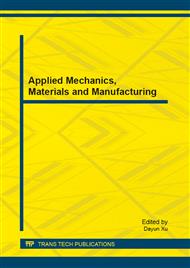p.3
p.13
p.19
p.26
p.33
p.40
p.46
p.51
Assessment of Uncertainties in Mechanical Models
Abstract:
Resistances of mechanical systems are primarily dependent on material properties, geometry and uncertainties associated to an applied resistance model. While materials and geometry can be relatively well described, the resistance model uncertainty is not yet well understood. The present contribution proposes a general concept of the model uncertainty. Factors affecting results obtained by tests and models and influences of actual structural conditions are overviewed. Application of theoretical principles is illustrated by an example of historic iron columns considering a simple mechanical model. Proposed probabilistic description of the model uncertainty consists of the lognormal distribution having the mean 1.35 and coefficient of variation of 0.12.
Info:
Periodical:
Pages:
13-18
Citation:
Online since:
August 2013
Authors:
Price:
Сopyright:
© 2013 Trans Tech Publications Ltd. All Rights Reserved
Share:
Citation:


